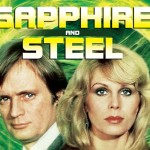In my effort to create a scripted podcast, I decided one of the best things I could do is go and find other scripted podcasts to listen to. In this pursuit, I came across EOS 10.
EOS 10 is a podcast created by Justin McLachlan. The title is the name of the space station where the show is set. The premise is that the chief medical officer on the station, Dr Horace Urvidian (Dan Berry) has become an alcoholic. Since Urvidian is a well-known figure in the Alliance (with a children’s book written about him.) his failure would be an embarrassment. To head this off, Dr. Ryan Dalias (McLachlan) is assigned to be his new chief of surgery. Ryan, the son of an admiral with a history with Urvidian, has experience with substance abuse, and convinces Urvidian to go sober.
In addition to the two doctors, the medical staff also includes Nurse Jane Johns (Natalie Cutcher), a snarky extrovert who likely became that way to survive Urvidian. She also pines for Dr. Osolong, a staff member who is mentioned but never appears, and also happens to be gay.
Rounding out the main cast is Levi (Charles Lipper), a deposed alien prince who now works at the station cafeteria. Levi is friendly, but a hypochondriac, hence his constant interaction with the medical staff. Levi is also not above going outside the law if he wants something.
This last trait puts the crew in contact with the recurring character Akmazian (Tim Torre). Akmazian is wanted by the Alliance as a terrorist, and has been hiding out in an unused section of the base. Akmazian claims to have been framed and tries to be helpful when he can, to get the crew, especially Ryan, on his side.
The only other recurring character of note is the Quarter Master (Chris Stinson), a two headed alien who for reasons unknown dislikes Ryan.
As there is no narrator, EOS 10 has to find ways to convey locations and situations while not resorting to the dreaded “as you know” trope. Fortunately, the writing is up to the task. It is helped along by being a clear pastiche of Star Trek: Deep Space Nine, at least in set up. This fills in a lot of blanks in the back story.
One thing the show does very well is create a sense of space. This is from small things like background noise. All scenes on the station have a particular background hum. Scenes in the cafeteria have the sounds of people chatting and plates clinking. But there are other sound effects used to tell the story, like having the Quarter Master’s voice alternate between speakers to show which head is currently talking.
The story itself covers a few themes. One is dealing with addiction of course, as shown through Urvidian and Ryan and their straight forward cases, but also in things like Jane dealing with her obsession with a man that will never notice her, and Levi pining for his past life as a royal.
There is also a government conspiracy plot, thanks to interaction with Akmazian that slow burns in season one, and comes to the forefront in season two. The show also tackles other issues, such as the episode Antivaxx which, as the title suggests, deals with the anti-vaccination movement.
On the acting front the show does well, pulling it’s cast from actors working in the Washington D.C. area. They all do fine work, but Dan Berry and Charles Lipper stand out as Urvidian and Levi. McLachlan does a good job as Ryan, but at times he can come off as a bit too relaxed.
If you are looking for a podcast that tells an interesting story without being too heavy, I would suggest checking EOS 10 out. So far, two seasons have been released consisting of eight episodes each.
I give EOS 10 a grade of B. It should entertain Science Fiction fans looking for a podcast, but might leave some people behind.







 With the second season premiere of Gotham just around the corner, I want to take this time to do my season wrap up review of the first season. If you want to check out my review of the first few episodes of the season you can go
With the second season premiere of Gotham just around the corner, I want to take this time to do my season wrap up review of the first season. If you want to check out my review of the first few episodes of the season you can go